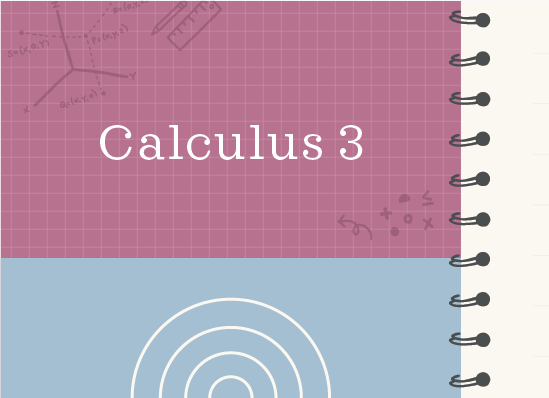Volume of the parallelepiped from vectors
Formula for volume of the parallelepiped
If we need to find the volume of a parallelepiped and we’re given three vectors, all we have to do is find the scalar triple product of the three vectors:
???|a\cdot(b\times c)|???
Hi! I'm krista.
I create online courses to help you rock your math class. Read more.
where the given vectors are ???a\langle{a_1},a_2,a_3\rangle???, ???b\langle{b_1},b_2,b_3\rangle??? and ???c\langle{c_1},c_2,c_3\rangle???. ???b\times c??? is the cross product of ???b??? and ???c???, and we’ll find it using the ???3\times 3??? matrix
???\begin{vmatrix}\bold i&\bold j&\bold k\\b_1&b_2&b_3\\c_1&c_2&c_3\end{vmatrix}=\bold i\begin{vmatrix}b_2&b_3\\c_2&c_3\end{vmatrix}-\bold j\begin{vmatrix}b_1&b_3\\c_1&c_3\end{vmatrix}+\bold k\begin{vmatrix}b_1&b_2\\c_1&c_2\end{vmatrix}???
???=\bold i(b_2c_3-b_3c_2)-\bold j(b_1c_3-b_3c_1)+\bold k(b_1c_2-b_2c_1)???
We’ll convert the result of the cross product into standard vector form, and then take the dot product of ???a\langle{a_1},a_2,a_3\rangle??? and the vector result of ???b\times c???. The final answer is the value of the scalar triple product, which is the volume of the parallelepiped.
Using vectors that define the parallelepiped to find its volume
Take the course
Want to learn more about Calculus 3? I have a step-by-step course for that. :)
Finding volume of the parallelepiped given by the vectors
Example
Find the volume of the parallelepiped given by the vectors.
???a\langle2,-1,3\rangle???
???b\langle3,2,-4\rangle???
???c\langle-2,0,1\rangle???
We’ll start by taking the cross product of ???b??? and ???c???.
???b\times c=\begin{vmatrix}\bold i&\bold j&\bold k \\ 3 & 2 & -4 \\ -2 & 0 & 1\end{vmatrix}???
???b\times c=\bold i\begin{vmatrix}2 & -4\\ 0 & 1\end{vmatrix}-\bold j\begin{vmatrix}3 & -4\\ -2 & 1\end{vmatrix}+\bold k\begin{vmatrix}3 & 2\\ -2 & 0\end{vmatrix}???
???b\times c=\left[(2)(1)-(-4)(0)\right]\bold i-\left[(3)(1)-(-4)(-2)\right]\bold j+\left[(3)(0)-(2)(-2)\right]\bold k???
???b\times c=(2+0)\bold i-(3-8)\bold j+(0+4)\bold k???
???b\times c=2\bold i+5\bold j+4\bold k???
???b\times c=\langle2,5,4\rangle???
The final answer is the value of the scalar triple product, which is the volume of the parallelepiped.
Now we’ll take the dot product of ???a\langle2,-1,3\rangle??? and ???b\times c=\langle2,5,4\rangle???.
???|a\cdot(b\times c)|=(2)(2)+(-1)(5)+(3)(4)???
???|a\cdot(b\times c)|=4-5+12???
???|a\cdot(b\times c)|=11???
The volume of the parallelepiped is ???11???.






